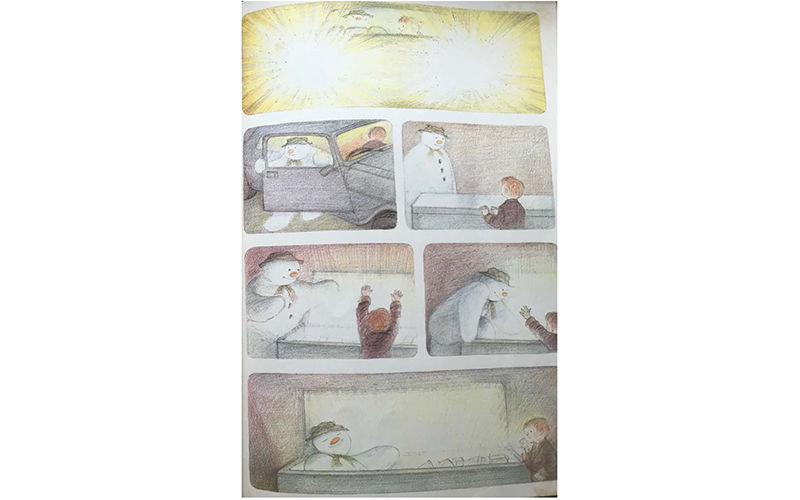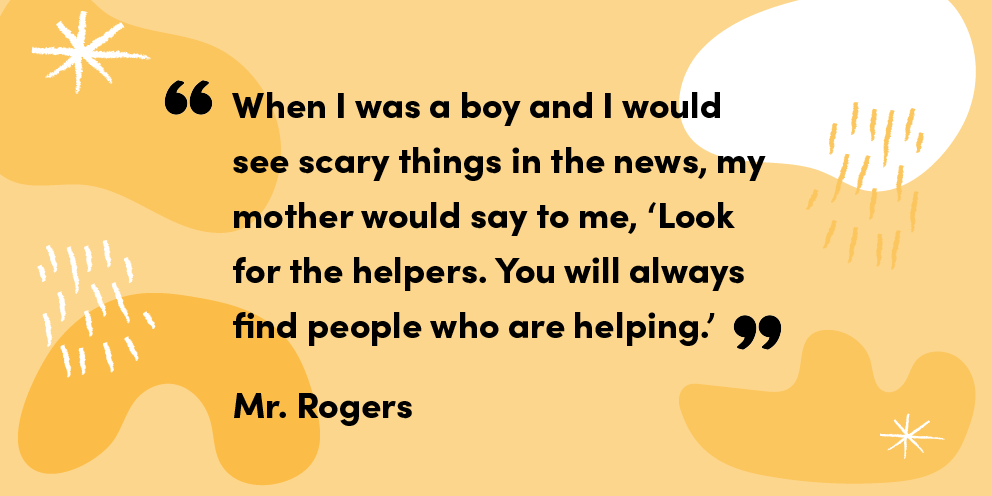About this series
Beauty in a Broken World is a collection of essays, poems, music, photography and spoken word generously contributed by a Harvard Divinity School student cohort led by author and Utah native Terry Tempest Williams, to bring solace and solidarity during the coronovirus pandemic.
Connection comes in many forms
Socially distanced from our friends and families there is so much that we “feel but cannot see.” As we travel this new road both together and apart, Georgie’s essay reminds us that connection comes in many forms. She hasn’t met us, she doesn’t see us, yet she feels the important role that we play in easing fear for patients and their loved ones in these times of uncertainty and challenge.
The pandemic has provided me with new opportunities to help my colleagues and community. This has been a bit scary and extraordinarily gratifying. I hope that you find comfort in realizing your role as a helper and recognize in this essay a sincere message of gratitude for the healing work we do.
— Robin Marcus, Chief Wellness Officer, University of Utah Health
ear Health Workers,
I am in rural Pennsylvania and I am thinking of you. It’s March and I’m staying at the house I grew up in. I haven’t been here this time of year in years, but the fields still smell like they did when I was a child—mud and daffodils—and the sounds of spring are the same—robins, doves, and other creatures waking up to what is warm. Evenings, the peepers come out in full chorus—the tree frogs I can hear but are invisible to me. I’ve been thinking about something our professor Terry said, about things we can feel but not see, and I’m remembering being in my body as a child. Climbing into the wild yellow branches of forsythia, for example, and feeling held.
Lately, I’ve been thinking a lot about childhood. Nights, I shut off the news and look through books my brothers and I used to read. In one, kangaroos are dressed as nurses, taking care of a roomful of babies and holding ice packs to fevered foreheads. In another, a boy builds a snowman and invites him inside while the parents are sleeping. They play together in the lamplight and ride a skateboard around the room. So that the snowman doesn’t get hurt, the boy guides him away from a fire in the fireplace. He opens the door of the refrigerator, and the snowman stretches his limbs towards the yellow glow.

Lately, I’ve been thinking a lot about bodies, and ways of adjusting. I’ve been thinking about kinds of care. This morning a friend who lives across the ocean texted me a video of her two-year-old playing nurse. She was holding a plastic stethoscope to a doll’s chest, saying "don’t worry" in French. The language was different, but the gesture of compassion familiar. I was thinking how it’s something so many children like to practice, and that doctors and nurses enact.
I don’t know you, I can’t see you, but here in Pennsylvania where the peepers are singing, I have been thinking of you. I’ve been picturing you with your own beating hearts, tending to the lives and hearts of others, and feeling hugely grateful for you, in awe of the quiet, brave, life-saving work that you do. Look for the helpers, says Mr. Rogers, and these days when I’m scared I’ve been remembering you. I hope it’s ok to say that, with my deepest heart, I’m drawing yellow circles of love around you, and holding you, like the kangaroos and the boy and the snowman in these stories do, towards all that is healing and light.
With deep gratitude and admiration,
Julianna
Robin Marcus
Terry Tempest Williams is a Utah native, writer, naturalist, activist, educator—and patient. Here, she reflects on the courage of nurses both serving and stepping forward during the pandemic.
Harvard T.H. Chan School of Public Health student Adam Meier dedicates a letter of gratitude to the healers, providers and supporters as part of the “Beauty in a Broken World” Coyote Chaplaincy.
As part of the “Beauty in a Broken World” series, Harvard Divinity School student Heather Wakefield shares four original poems that reflect on gratitude, growth, strength and solidarity during the pandemic.
